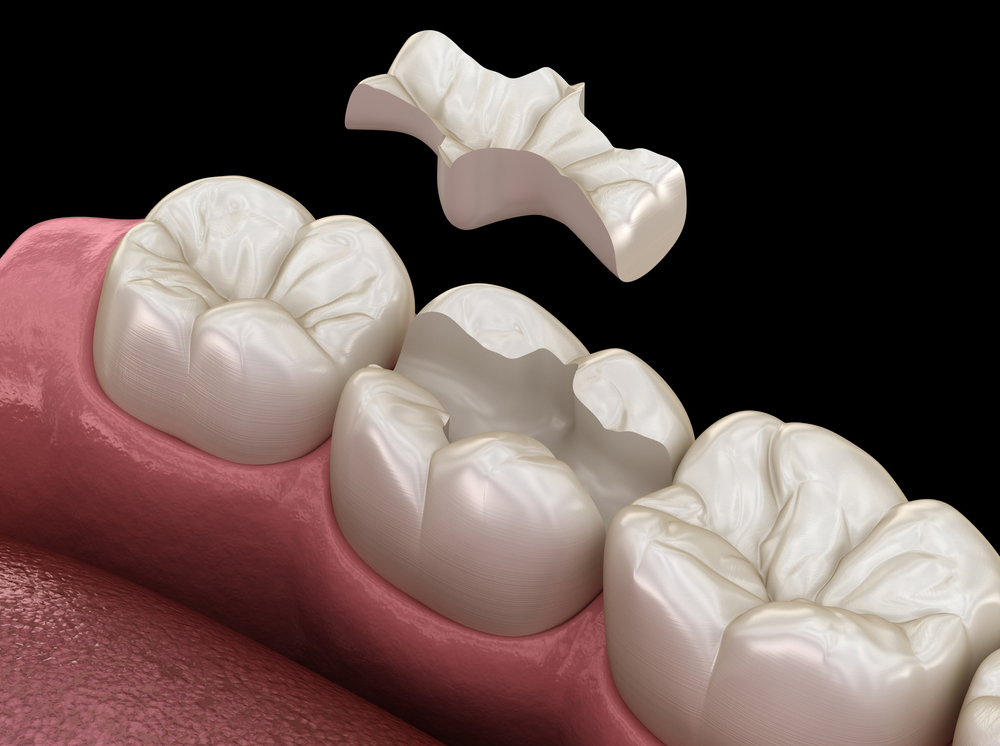
Many people confront some kind of cracking or deformation of the tooth due to hard biting, grinding problems and even traumas and accidents. The deformities and decaying portions are easily repaired by traditional filling and crown covers. Recent innovations, however, have brought about much more durable and aesthetic alternatives like inlays and onlays in dentistry. Knowledge of dentists and emerging laboratory conditions will lead to the most effective solution. Andepol possesses full capacity on both aspects for producing and performing onlay and inlay restorations.
For attractive smiles, naturally, shining teeth are very significant. Healthy teeth need professionally repaired cusps, reinforced tooth structure, and well-treated decays. Our clients with irritated gums and painful toothaches usually seek inlay, onlay, or overlay restorations. Why does a conventional filling remain insufficient? The answer is inlays and onlays are usually recommended when decays cover a larger area than half of the tooth surface or so deep to require root canal treatment. In most cases, composite filling does not sustain strength and is more open to fractures. Due to the materials used, inlays and onlays are more durable and stay longer years in your mouth without any change.

Inlay/onlay restoration is an advanced technique due to the materials and lab-production. The use of porcelain or composite material maximizes the quality of inlay/onlay while manufacturing with more precise measurements in the laboratory lengthens the life cycle compared to standard composite fillings. Functionally, there is no particular difference between onlay and inlay though the surface where they are cemented differs. Dental onlays cover a larger area on the decaying tooth surface whereas dental inlays fill in the space between the cusps. So, onlays are used to fill in the cusps but inlays are used to fill in-between cusps. Both treatments need first to remove the decaying portion and clean the installation area. Temporary onlay is cemented on the tooth to make it function till the permanent onlay is installed with dental adhesive.
During your first visit to our clinic, subsequent to cleaning of cavities on tooth, our dentist takes the moulding of your cusp with the space around it and then sends this moulding to our dental laboratory. Temporary filling is applied instantly, before you leave the clinic. Our lab technicians at Andepol produce your inlay/onlay cover using specific types of equipment. Nowadays, our laboratory also utilizes digital dentistry techniques including CAD/CAM options to optimize the preciseness while shortening the period of inlay production. In your second visit, your permanent inlay or onlay is cemented with dental adhesive, and restoration is completed by polishing its surface.
In earlier decades, crowns were more popular as they used to cover the whole tooth cusp when the decay was deeper and larger. Yet, crowns need to abrade the living part of your original tooth as they cover the whole surface. Today, by the use of onlay and inlay restoration in similar cases, there is no need to lose your whole tooth or the healthy part of your natural cusp. Having all pros and cons in mind, our experts at Andepol Turkey will let you know the most beneficial technique and get your personalized treatment for your dental health.
Inlay/onlay restoration utilizes two different types of materials. Porcelain and composite fillings are preferred for different reasons. Dental composite is a commonly used material due to its strength, crunch resistance, and cost-effectiveness. It may remain in your onlay for decades without any change or damage. The composite material does not cause any health risk and is safe to use with hot and cold food chewing. In both cases, the best choice emerges as porcelain material. Similar to ceramic teeth, porcelain onlays are much more resistant than onlay composites and the surface is smoother to prevent plaque produce by time. Porcelain inlays never stain or discolour and they do not release any tone difference for adjusting teeth. Porcelain material usually costs higher than composites. Especially for international guests of Andepol in Turkey, both options are presented in very affordable amounts, as compared to overseas dental costs. No matter which material you select for the inlay and onlay, we always serve the highest quality.
You can get more detailed information and choose your budget-friendly option by calling our dental consultants at Andepol in Antalya.
Copyright @ Andepol Dental All Rights Reserved.
Get Treatment Plan & Quote